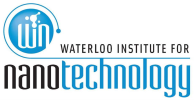WIN & CENIDE Seminar Series on 2D-MATURE: Professor William S. Wong
Mike & Ophelia Lazaridis Quantum-Nano Centre (QNC)
- QNC 1501
Thursday,
Jan 25, 2024 at 10:00 AM EST
{
"name":"WIN & CENIDE Seminar Series on 2D-MATURE: Professor William S. Wong",
"description": "https:\/\/ticketfi.com\/event\/5495\/win-cenide-seminar-series-on-2d-mature-professor-william-s-wong\n\nProcess integration of MoS2 thin-film transistors for large-area electronics\n\nAbstract: The increasing interest in the two-dimensional (2-D) layered transition metal dichalcogenide (TMDC) semiconductors has led to their potential use for high-performance large-area electronic applications. Challenges remain to integrate TMDC layers over large areas. Transfer methods have intrinsic limitations in areal coverage while direct deposition processes are still emerging. Two approaches will be presented to address these challenges. In the first methodology, few-layer structures (~ 3 monolayers) were fabricated using a layer transfer and dry etching process to thin multilayer (~ 60-90 nm thick) molybdenum disulfide (MoS2) structures. The effect of plasma etching the TMDC surface and bulk defects in the layers on the device electrical performance and stability will be described. An observed degradation of the carrier transport and electrical stability were found to be due to the proximity of the etched surface to the device active region of the device. The results reveal the tradeoffs of fabricating few-layer devices using exfoliation and dry etching approaches. In a second investigation, hybrid organic\/inorganic semiconductor inks were explored. The ink was prepared by mixing two different materials, MoS2 nanosheets and solution-based poly(3-hexylthiopene-2,5-diyl) (P3HT). To enhance the level of exfoliation and stability of MoS2 nanosheets in P3HT, the surfactant trichloro(dodecyl)silane (DDTS), was used to functionalize the MoS2 surface. Inkjet printed thin-film transistors (TFTs) using the nanosheet suspension were found to enhance the field-effect mobility by approximately 3× compared to TFTs without the suspension. The introduced single-crystalline MoS2 nanosheets in the P3HT matrix improved the electrical and structural properties of the inkjet-printed thin-film polymer. The enhancement of the electrical properties of the TFTs was determined to be due to a structural change in the thin-film semiconductor. The observed current-voltage changes were correlated to measurable structural alterations in the semiconductor thin film characterized by X-ray diffraction, atomic force microscopy, and UVvisible absorption spectroscopy.\n",
"startDate":"2024-01-25",
"endDate":"2024-01-25",
"startTime":"10:00",
"endTime":"11:00",
"location":"Mike & Ophelia Lazaridis Quantum-Nano Centre (QNC) QNC 1501 - 200 University Ave W Waterloo ON N2L 3G1 Canada",
"label":"Add to Calendar",
"options":[
"Apple",
"Google",
"iCal",
"Microsoft365",
"Outlook.com",
"Yahoo"
],
"timeZone":"US/Eastern",
"trigger":"click",
"inline":true,
"listStyle":"modal",
"iCalFileName":"invite.ics"
}
Event Details
Process integration of MoS2 thin-film transistors for large-area electronics
Abstract: The increasing interest in the two-dimensional (2-D) layered transition metal dichalcogenide (TMDC) semiconductors has led to their potential use for high-performance large-area electronic applications. Challenges remain to integrate TMDC layers over large areas. Transfer methods have intrinsic limitations in areal coverage while direct deposition processes are still emerging. Two approaches will be presented to address these challenges. In the first methodology, few-layer structures (~ 3 monolayers) were fabricated using a layer transfer and dry etching process to thin multilayer (~ 60-90 nm thick) molybdenum disulfide (MoS2) structures. The effect of plasma etching the TMDC surface and bulk defects in the layers on the device electrical performance and stability will be described. An observed degradation of the carrier transport and electrical stability were found to be due to the proximity of the etched surface to the device active region of the device. The results reveal the tradeoffs of fabricating few-layer devices using exfoliation and dry etching approaches. In a second investigation, hybrid organic/inorganic semiconductor inks were explored. The ink was prepared by mixing two different materials, MoS2 nanosheets and solution-based poly(3-hexylthiopene-2,5-diyl) (P3HT). To enhance the level of exfoliation and stability of MoS2 nanosheets in P3HT, the surfactant trichloro(dodecyl)silane (DDTS), was used to functionalize the MoS2 surface. Inkjet printed thin-film transistors (TFTs) using the nanosheet suspension were found to enhance the field-effect mobility by approximately 3× compared to TFTs without the suspension. The introduced single-crystalline MoS2 nanosheets in the P3HT matrix improved the electrical and structural properties of the inkjet-printed thin-film polymer. The enhancement of the electrical properties of the TFTs was determined to be due to a structural change in the thin-film semiconductor. The observed current-voltage changes were correlated to measurable structural alterations in the semiconductor thin film characterized by X-ray diffraction, atomic force microscopy, and UVvisible absorption spectroscopy.
Speakers
Location
Mike & Ophelia Lazaridis Quantum-Nano Centre (QNC) - QNC 1501
200 University Avenue West Waterloo, ON N2L 3G1 CA
Tickets
Type |
Price |
|---|---|
|
In-person attendance |
Free |
Organizer Details

Waterloo Institute for Nanotechnology
The Waterloo Institute for Nanotechnology (WIN) is a global leader in discovering and developing smart and functional materials, connected devices, next generation energy systems, and therapeutics and theranostics.



